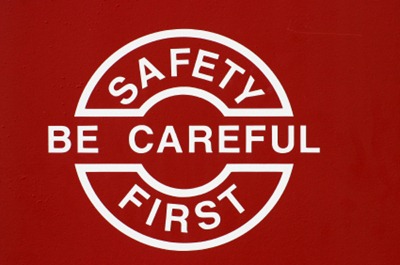Many people believe that to apply Value Stream Marketing using Lean Techniques is about removing waste. Eliminating waste is one of the Guiding Principles of Value Stream Marketing but you must make some fundamental improvements in your marketing cycle before a pull marketing system will work. Value Stream Marketing (VSM) is about having a minimum amount of Work in Process (WIP). However, you cannot just wake up one morning and decide to do it. You cannot just remove marginal leads or work with only higher valued leads. It’s about a journey versus the decision to reduce your WIP. Managing your WIP will make you aware of many wasteful processes and as a result provide opportunity to remove them.
In VSM there are four critical components that you must understand: Protect Sales, Reduce your WIP, Improve your Cycle Time and Remove waste.
Protect Sales
Most of the time when an organization seeks to improve their marketing the central message is creating more prospects or more WIP. Seldom does that work. Filling the pipeline creates more WIP which creates more work and reduces your effectiveness and productivity. You end up with the wrong people doing the wrong thing at the wrong time. This is the essence of overproduction.
The first step is to distinguish how your sales, prospects are entering the pipeline. That should be fairly easy to distinguish. However, it may result in a very long list. Try to get a handle on this and group them according to your existing marketing channels. Take an empirical view of this.
The next step is where most of the problems occur. Once someone is in a pipeline all kinds of things happen and it’s hard to be certain what took place that enabled them to come out the other end as a customer. This second step will ask us to start trying to understand our marketing cycle and put it in a meaningful value stream. You may only understand a portion or a percentage of it; the rest may be so unpredictable that you cannot even venture to guess. Listing the process steps of your marketing stream will allow you to start noticing conversion rates, constraints and variation.
However, to start managing sales you have to start measuring it in a meaningful manner. The third step is measurement. If you cannot measure something the old story is don’t do it. In the sales and marketing process at this point we are not asking you to change anything just list it so that we can start observing and try to apply measurements to it.
Many times you will be able to identify a small percentage of prospects/channels that contributes to the majority of your sales. This is the value stream that you should concentrate your efforts and improve upon. It typically is the best known and easiest to identify (wonder why?).
Reduce your Work in Process (WIP)
After you have determined the steps of your marketing cycle this becomes your Value Stream. Typically, you will have more than one. This is when a Marketing Kanban comes into use to visualize the flow and the WIP. Create a Kanban for each Value Stream that you can reasonably map. Visualizing the process step by step will improve the overall system performance. I like the visualization trick of thinking about lowering the water in the river. When you do, the rocks will appear and it will be easier to navigate around them. The larger rocks may be prospects that you have not adequately defined a solution or your product is not a perfect fit. Other rocks or channels may have to many hidden cost or layers of distribution. There can be numerous areas of concern but mapping them brings the rocks to the surface so that they are noticed. By the way, you may have a couple of channels that have no rocks appearing at all.
Don’t be worried about producing too many Value Streams, we can combine a few later or decide not to manage certain ones. The different channels create a lower level of flow (wider river) and more rocks to appear. It also identifies and reduces variation which just about always is the reason people believe it will not work. This is similar to the concern many manufacturing companies have about reducing batch sizes to gain continuous flow. Defining the exact Value Stream will be the single most important factor in increasing flow and reducing your WIP.
Reducing your Work in Process requires that it becomes a physical process. You must put real numbers and real events on your Kanban Board. The measurements that you determined in Protect Sales become real. Your direct mail pieces may be only bringing a 3% response. Your Auto-responders converting only 10% of your prospects into attending a webinar or downloading an eBook. As you visualize the process try to get a feel for the pace and look for missing areas. A Value Stream Mapping trick is to chunk certain areas of the Value Stream grouping them. This will help you assign responsibilities and find missing or extra steps in the process. This is also a great time to remove a little of the low-hanging fruit. However, this is not the time for wholesale changes this is a time for you start gaining knowledge that you did not have before.
This is actually your first step in developing a pull system. You will start seeing overproduction or bottlenecks and on the flip side you will see where you may be starving a resource. This is the time that you will get a feeling of what leveling and pace is all about. Many times you can identify these areas of concern and limit or re-channel incoming prospects into underutilized resources. Further defining your steps and more specifically creating a Kanban board will help you see that next step. That physical point of a handoff or a transaction to that next step is very important. With hardly any effort at all you begin creating a pull system and leveling the demand.
Improve your Cycle Time
 Improving the Marketing cycle is where the fun really begins. By protecting sales and reducing your WIP you have only made minor changes other than discovering what makes your marketing process flow. Developing your Marketing Kanban has allowed you to sort out variation and discover over and underutilized resources. Visualization of your marketing cycle has hopefully allowed you to remove some of the low hanging fruit, I actually hate that term.
Improving the Marketing cycle is where the fun really begins. By protecting sales and reducing your WIP you have only made minor changes other than discovering what makes your marketing process flow. Developing your Marketing Kanban has allowed you to sort out variation and discover over and underutilized resources. Visualization of your marketing cycle has hopefully allowed you to remove some of the low hanging fruit, I actually hate that term.
Most people will have you take your Value Stream mapping Process and create your Kanban board. What I explained in the Reduce your WIP section is to create a simple flow diagram with a Kanban. Why backwards, I find most marketing people are somewhat intimidated by Lean Tools of mapping and can readily identify a Kanban board. Creating that structure and working with it to provide flow makes the transition to a Value Stream Mapping project much easier. Using the Kanban, you have created a Current State Map with the metrics you need to develop a Future State Map. The outline I use for creating a future state:
In the book,Value Stream Mapping for Lean Development: A How-To Guide for Streamlining Time to Market, Drew Locher explained how to create a Future State Map by utilizing seven basic questions:
- What does the customer really need?
- How often will we check our performance to customer needs?
- Which steps create value and which steps are waste?
- How can we flow work with fewer interruptions?
- How do we control work between interruptions, and how will work be triggered and prioritized?
- How will we level the workload and/or different activities?
- What process improvements will be necessary?
Drew goes on to conclude that future state mapping is not a brainstorming session. He likes to use a key ground rule of 70%. If the team believes that they have a 70% chance of implementing a particular idea in less than one year, it could be included as part of the future state. If it is longer, the entire improvement effort would suffer. These specific improvement efforts will be depicted in a value stream map by the use of a Kaizen Burst icon.
When considering how to use value stream mapping in the marketing process I think the seven questions provide an excellent base for walking through the process. You have to remember, you already have a current state map drawn. In essence what you are trying to do is to move not only current state to future state but from an internal perspective to an external perspective. Your customer should be determining your value stream.
I believe this is the best way to improve your marketing cycle. Taking each channel or swim lane on your Kanban board one at a time and mapping the process will give you the best results. After creating the Future State Map move the process back to the Kanban board for execution.
Contrary to a whole lot of Lean folks, I believe waste is an afterthought in Lean. After you Protect Sales, Reduce WIP and Improve your Marketing Cycle, waste will appear, and appear again, and again. When it seems like low hanging fruit remove it, but not before. Your challenge is not removing waste but increasing flow, reducing variation and creating reliability. Ultimately you will find waste in the number of prospects within your marketing cycle, your WIP!
The more WIP (more inventory): the more variation and less reliability you have will cause a reduction of flow. Forecasts will be off or non-existent even though we will have a considerable number of prospects. Start focusing on your lead times and waste will disappear.
If you don’t believe me and you still want to get rid of some waste here is my stab at it. The seven types of waste in manufacturing are well known: overproduction, waiting, transport, extra processing, inventory, motion, and defects. The seven types of waste for marketing streams are:
- Overproduction as a result of too much work in process
- Waiting as a result of poor flow and lack of leveling demand. I discourage the concept that we should not have slack in a system and idle time.
- Complexity poor scheduling systems that prevent flow
- Extra Processing responding to the marketing idea of the week. .
- Poor Handoffs are created as you move from one step of the process to another. This results in delays and incorrect information.
- Inventory to much Work in Process(WIP)
- Push Marketing pushing marketing processes and material onto prospects and customer that are not asking for it.
As mentioned before these concepts should become apparent as you work through the three preceding steps. Value Stream Marketing is not about removing waste as the first step. It is about creating awareness of each value stream so that you can determine the value of your marketing from the customers’ point of view.



